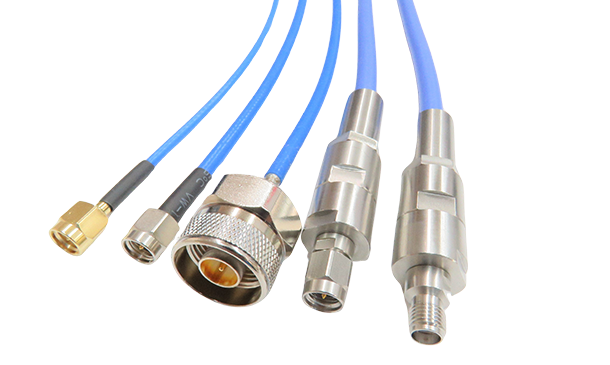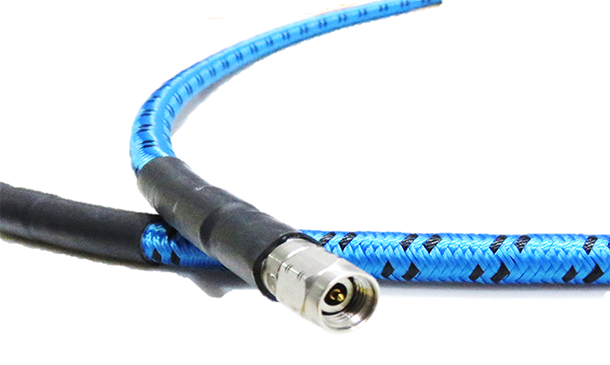- HOME
- Applications
- Blog
- Microwave Communication: The Core Technology of Modern Technology and the Key Role of RF Connectors
Microwave Communication: The Core Technology of Modern Technology and the Key Role of RF Connectors
24-11-13Introduction
With the rapid development of science and technology, microwave communications has become more and more popular in the world. It has become one of the key technologies of modern communication systems. Due to its high frequency, fast transmission speed and high stability, microwave communications are widely used in important fields such as 5G mobile networks, satellite communications and wireless networks. Especially in 5G networks, microwave technology can provide higher bandwidth and lower delay to meet the demand for high-speed data transmission. In addition, long-distance data transmission in satellite communications and wireless networks also rely on microwave technology. These applications demonstrate the irreplaceable role of microwave communications in modern society and drive the further development of global information technology.
<Extended reading: Get to Know Multi-Functional of BMAM RF Connectors>
What Are the Common Communication Technologies?
In recent years, with the booming development of communication technology, our life has become more convenient. The communication technology includes microwave communication, fiber optic communication, satellite communication, Wi-Fi communication, honeycomb network communication and Bluetooth communication and other communication technologies. The basic introduction of common communication technologies, advantages, disadvantages and application areas and other related illustrations are as follow.
Microwave Communications
Basic Introduction
Microwave communications use high-frequency electromagnetic waves (1 GHz to 300 GHz).
Advantages
High-speed data transmission. Suitable for long distance communication, such as satellite and WAN. Stronger ability to penetrate obstacles.
Disadvantages
Precise alignment of transmitter and receiver is required. More affected by weather factors.
Applications
5G, satellite communication and radar system.
<Extended reading: Mastering 2.4mm Connectors and Adapters: Applications, Specifications, and Selection Guide>
Fiber Optic Communication
Basic Introduction
Fiber optic communication is the transmission of data through optical signals in optical fibers.
Advantages
Large bandwidth and the data transmission speed is extremely fast. Strong anti-electromagnetic interference, long and stable transmission distance.
Disadvantages
High installation cost, construction difficulty. Inconvenient maintenance after fiber damage.
Applications
Data center and high-speed broadband network.
<Extended reading: Understanding Hermetic Sealing Technology and Hermetic Connectors in RF Applications>
Satellite Communication
Basic Introduction
Long-distance data transmission using geosynchronous satellites or near-earth satellites.
Advantages
Wide global coverage, reaching remote areas. It is suitable for areas where wireless coverage is difficult, such as the sea and the air.
Disadvantages
Large transmission delay, especially for geosynchronous satellites. High construction and maintenance costs.
Applications
Global Positioning System (GPS), aerospace communications.
<Extended reading: SSMP Connectors: Specifications, Advantages, and Types>
Wi-Fi Communication
Basic Introduction
Wireless LAN technology, using 2.4 GHz or 5 GHz frequency band for short-range data transmission.
Advantages
Flexible deployment, suitable for home, office and other environments. Low installation cost, no wiring required.
Disadvantages
Limited transmission range. Easy to be interfered, relatively high security issues.
Applications
Home network, public wireless hotspot, IoT device connection.
<Extended reading: Explore BMA Connectors and Applications in Microwave Technology>
Cellular Communication
Basic Introduction
A wireless communication system based on cellular base stations, supporting long distance data transmission from mobile devices, suitable for 4G and 5G networks. Cellular communication is also known as Mobile Network.
Advantages
Strong mobility support and wide coverage. Allows multiple users to connect at the same time, which is suitable for large-scale communication.
Disadvantages
As the distance increases, the signal strength decreases. Limited spectrum resources, with the increase of the number of users, easy to cause network congestion.
Applications
Mobile phone communication, mobile data service, IoT device connection.
<Extended reading: SSMP Adapters: Key Functions, Types, Advantages, and Applications>
Bluetooth Communication
Basic Introduction
A short-range wireless technology, commonly used for point-to-point data transmission between devices.
Advantages
Low power consumption, suitable for close-range wireless transmission. It is easy to pair with devices and widely used.
Disadvantages
Short transmission distance, low data rate. Easy to be interfered, relatively low security.
Applications
Wireless headset, wearable devices, IoT devices.
<Extended reading: 5 Minute Guide to Understanding the Uses and Applications of SMA Adapters>
How Microwave Communication Works?
Microwave communications work by using high-frequency electromagnetic waves (usually between 1 GHz and 300 GHz) to transmit data or voice signals between the transmitter and receiver. Microwave is a part of radio wave, which has a shorter wavelength, can be transmitted in the air and has a high transmission speed, which makes it suitable for wide-area, high-rate wireless communications.
Basic Workflow of Microwave Communications
Signal Conversion
First, the data or voice signals are converted to microwave signals by the converter.
Signal Emission
Microwave signals are transmitted in a specific direction through a transmitting antenna. The transmission characteristics of microwaves are often required a "line-of-sight" condition. There must be no obstruction between the transmitting end and the receiving end.
Signal Transmission
Microwave signals are transmitted in a straight line through the air and can be transmitted over long distances through the atmosphere. In cases where greater coverage is required, repeater stations are used to extend the transmission distance.
Signal Reception
The antenna at the receiving end is responsible for receiving these microwave signals and converting them back into raw data or voice signals for use by the equipment.
<Extended reading: 2.92mm Connectors -The High Frequency Applications for Microwave Field>
Microwave Communication
The Transmission Process of Microwave Communications Relies on Four Important Components:
Transmitters, receivers, transmission lines and antennas. These components need to work together to ensure that microwave signals are efficiently transmitted from the transmitter to the receiver.
Each part of the microwave communication is described below:
Transmitter
The main function of a transmitter is to convert the data to be transmitted (e.g., voice, video, or data signals) into microwave signals. It consists of a modulator that modulates the original signals to a microwave frequency and then amplifies these signals so that they can be sent at the proper power. A transmitter, usually located at a base station or satellite earth station, is responsible for transmitting the signal to the next communication node or client.
Receiver
The receiver function is to extract the raw data from the microwave signal received by the antenna. It includes a demodulator that reduces the modulated signal back to an intelligible data message and amplifies it for subsequent processing or transmission to the terminal equipment. The receiver should have a strong sensitivity to effectively capture the weaker microwave signals, especially in the case of long-distance transmission or severe signal degradation.
Transmission Line
Transmission lines are the physical medium used to connect a transmitter to an antenna, or a receiver to an antenna. In microwave communications, commonly used transmission lines include coaxial cables and waveguide tubes. The role of the transmission line is to transmit the microwave signal from the transmitter to the antenna or from the antenna to the receiver with minimum loss. Among them, the quality and layout design of the transmission line is crucial because it directly affects the signal strength and transmission efficiency.
Antennas
Antennas are responsible for converting telecommunications signals into electromagnetic waves (transmitting), or for converting received electromagnetic waves into telecommunications signals (receiving). In microwave communications, common types of antennas include parabolic dish, whip antenna, and array antenna. The design of the antenna determines the direction and coverage of the signal transmission. Antennas are usually mounted on tall buildings or base stations and need to be precisely aligned with the target direction to ensure optimal signal transmission.
<Extended reading: SMA Connectors - The Most Common RF Connectors>
Application of Microwave Frequency in Radio Frequency Technology
Microwave frequencies are used in a wide variety of applications in radio technology, covering a number of important areas. Because of its high speed, long distance transmission and high penetration, microwave has become a key technology for modern communications and other high technology systems. The following is an introduction to some of the major application areas, as well as specific examples to enable a better understanding and application of microwave communications technology:
Cellular Communications and 5G Networks
In modern mobile communications, microwave frequencies play a central role in the development of 5G networks, which use millimeter-wave frequency bands (24 GHz to 100 GHz) to enable extremely high-speed data transmission with ultra-low latency and greater bandwidth to support high-demand applications such as virtual reality (VR), augmented reality (AR), and electric vehicles.
Applications
Telecommunications companies such as Chunghwa Telecom Co., Ltd. and Far EasTone Telecommunications Co., Ltd. have begun to widely deploy 5G networks, which utilize microwave frequency bands to provide faster download speeds and better network connectivity stability. Enterprises using 5G technology can enhance the efficiency of industrial automation
Through efficient data transmission for remote monitoring, smart manufacturing and Internet of Things (IoT) application development.
Satellite Communication and Aerospace Technology
Microwave frequencies are critical in satellite communications, especially in the C-band (4 GHz to 8 GHz) and Ku-band (12 GHz to 18 GHz). These frequency bands are suitable for long-distance signal transmission and can penetrate the atmosphere for communication between satellites and ground stations.
Applications
Microwave communications technology has been utilized to establish remote data transmission networks and play an important role in meteorological forecasting, disaster monitoring and navigation.
<Extended reading: What is high frequency? High Frequency Features and Applications!>
Military and Radar Systems
Microwave technology is a key component of modern military and radar systems. Radar systems use microwave frequencies to detect the position, velocity and distance of an object. These technologies are widely used in military defense, air traffic control, and meteorological observations.
Applications
Microwave radar technology is used in military systems for early warning and homeland defense. For example, defense systems deploy microwave radar to detect long-range aircraft and provide precise airspace surveillance. In addition, microwave technology is used in the military's electronic warfare systems to effectively jam enemy communication systems and improve defense capabilities.
Drone Technology
The development of UAV technology is also highly dependent on microwave frequencies, especially for wireless remote control and data transmission. Microwaves ensure that UAVs can be controlled reliably over long distances and transmit high-definition images and other sensor data in real time.
Applications
Drone technology has been widely used in agriculture, logistics and defense. For example, agri-tech companies utilize drones equipped with microwave communications technology for crop monitoring and watering operations. In addition, drone technology is also being used for border patrols and search and rescue operations in natural disasters, where efficient microwave data transmission ensures real-time monitoring and operational guidance.
<Extended reading: Microwave Technology Principles and Applications>
The Key Role of RF Connectors in Microwave Communications
The basic function of an RF connector is to connect different RF circuits, devices or systems to ensure efficient and stable transmission of RF signals.
High-Frequency Signal Transmission Stability
In microwave communications systems, RF signals are very high frequency, which means that the connector must be able to handle high rates of signal transmission. High-quality RF connectors ensure that signals are not excessively lost or degraded during the connection process, thus maintaining a stable signal transmission. For example, 5G base stations and satellite earth stations rely on high-quality RF connectors to ensure efficient signal transmission between different devices.
Reduce Signal Reflection and Interference
In high-frequency transmission, any small defective connection may cause signal reflection or instability, which in turn affects system performance. High-quality RF connectors are designed with precision to effectively reduce signal reflection, avoid energy loss in transmission, and have good interference immunity to minimize the effect of external noise on microwave signals.
Improve Transmission Efficiency
Each component of microwave communications needs to minimize signal loss, the quality of the RF connector will have a direct impact on the transmission efficiency of the entire system. If a low quality RF connector is used, signal loss and distortion will increase, which may result in communication interruption or signal quality degradation. Therefore, a high-quality RF connector ensures that the signal is optimized as it travels from the transmitter to the antenna and then to the receiver device.
Reliability and Durability
In harsh environments, connectors need to be highly durable and reliable. High-quality RF connectors are more resistant to corrosion, high temperatures and mechanical shocks, which is crucial for long-term stable operation. Especially in harsh environments such as high mountains or seashores, the quality of RF connectors is very stringent to ensure stable system operation.
<Extended reading: What is mmWave? Advantages, Disadvantages and Applications!>
Conclusion
In conclusion, microwave communications technology plays a vital role in all areas of modern society. Whether it's 5G networks, satellite communications, military radar systems, or drone technology, radio frequency connectors (RF connectors) play a key role in these systems. High-quality RF connectors can significantly improve the stability and efficiency of signal transmission, as well as reduce interference and signal loss, which is the basis for ensuring the stability of the entire communication system.
Huang Liang Technologies is dedicated to provide a wide range of high-precision RF connectors to meet the needs of different microwave communications equipment, and to help customers improve system performance and reliability with stable and efficient solutions. If you need to know more about RF connectors, please feel free to contact Contact Us and we will provide you with professional support and the best solution.





